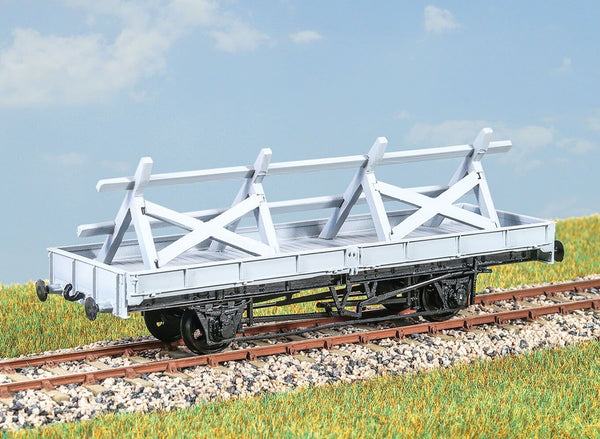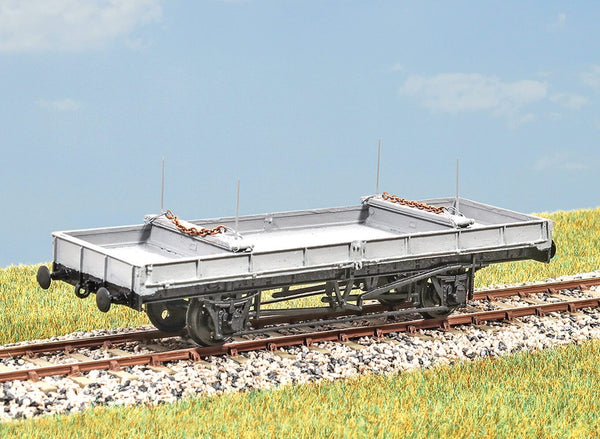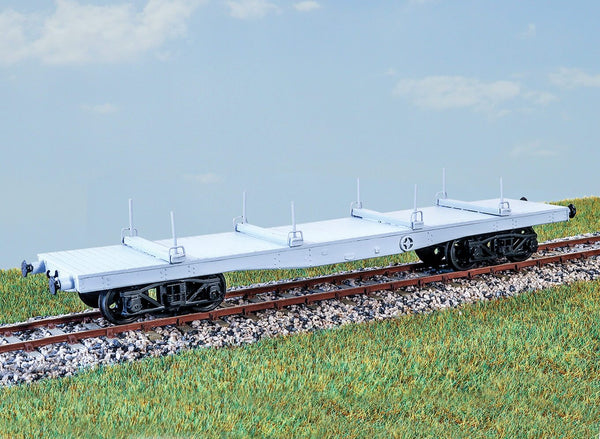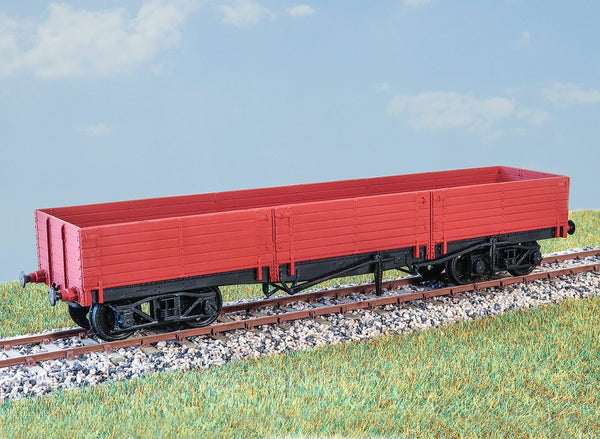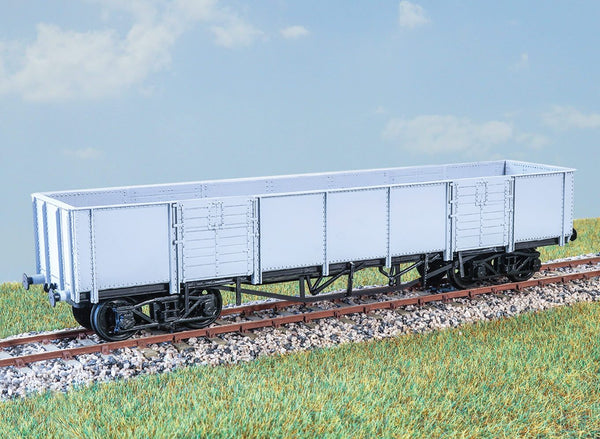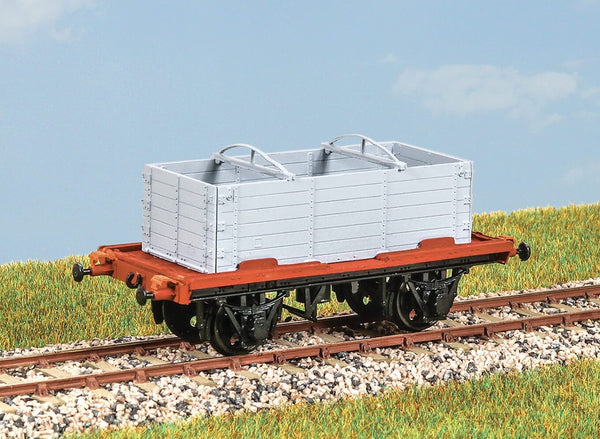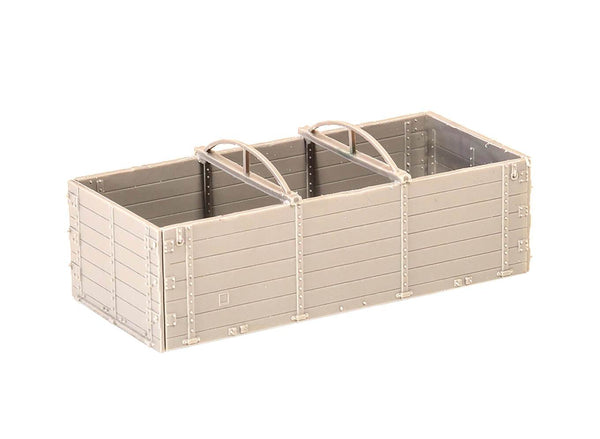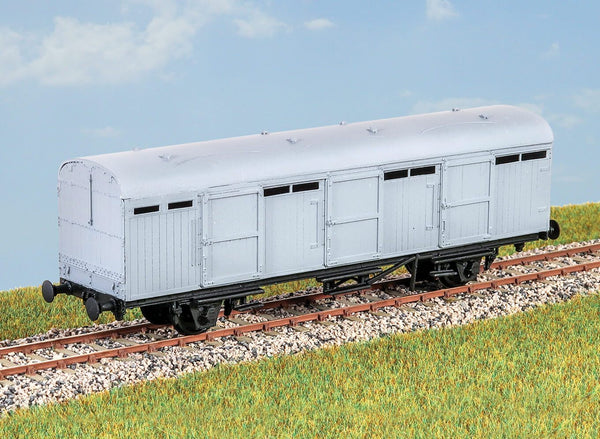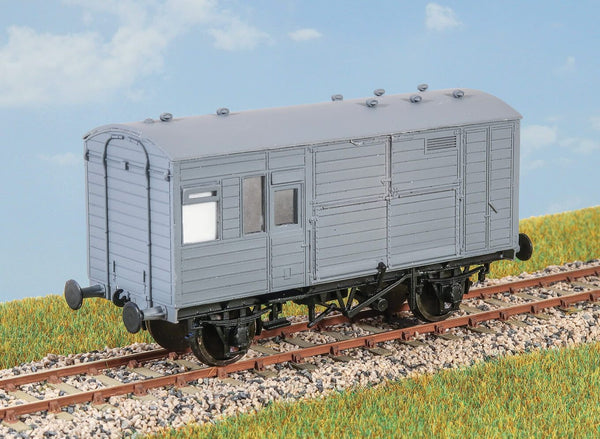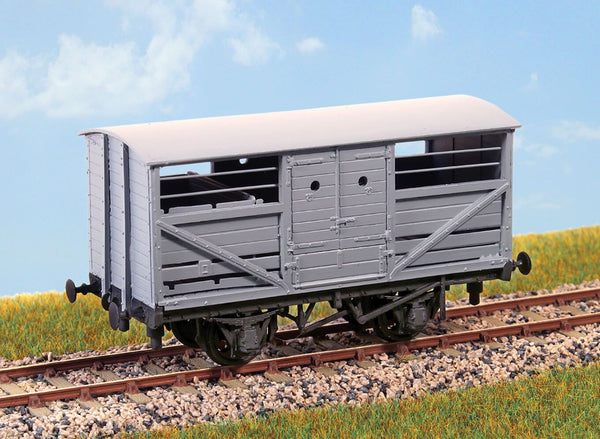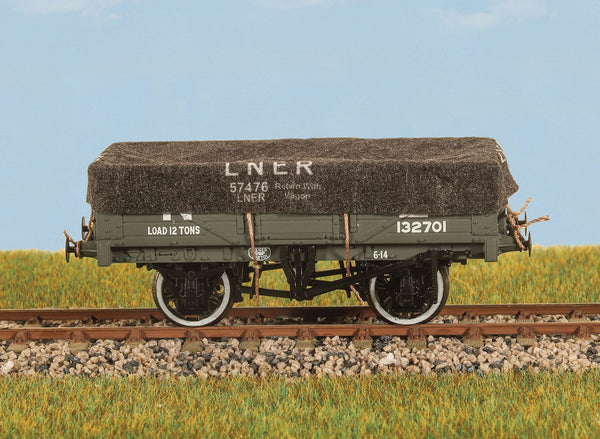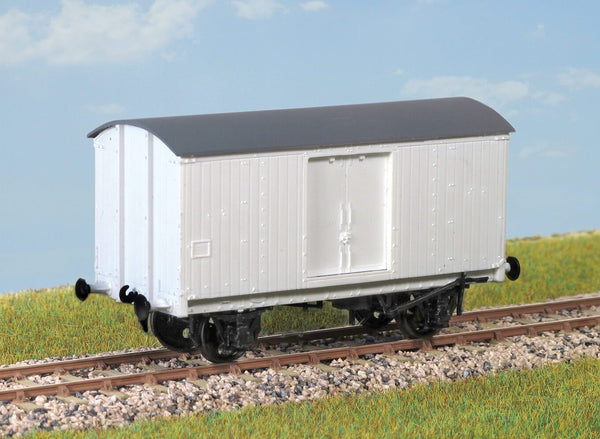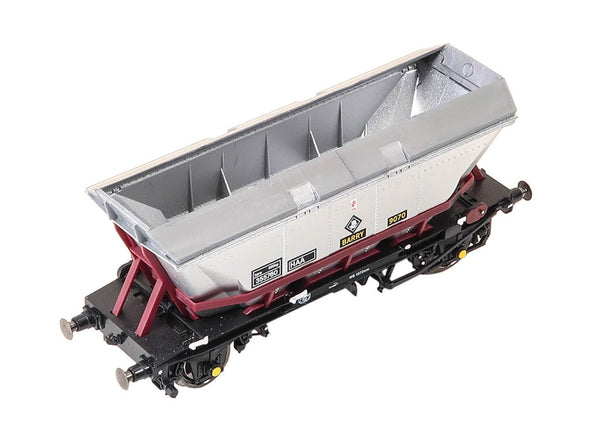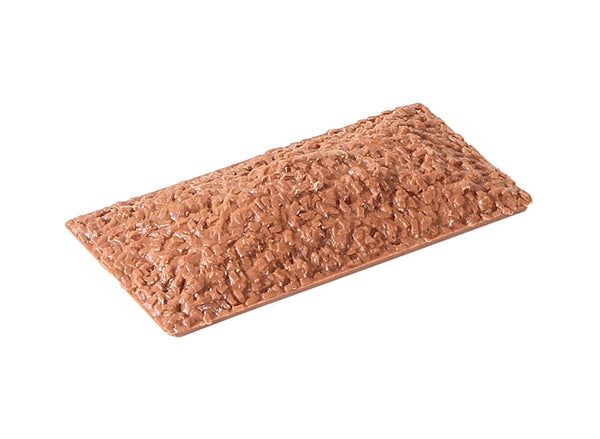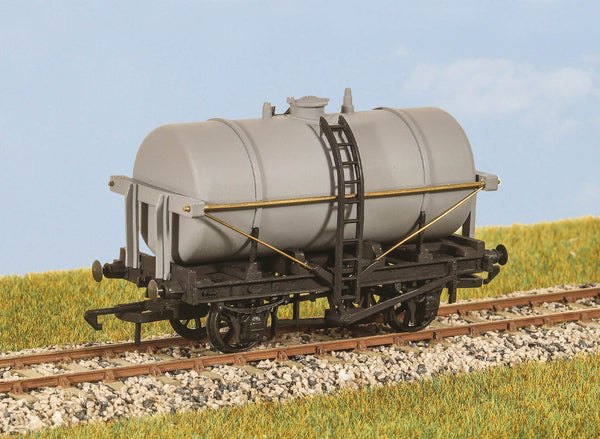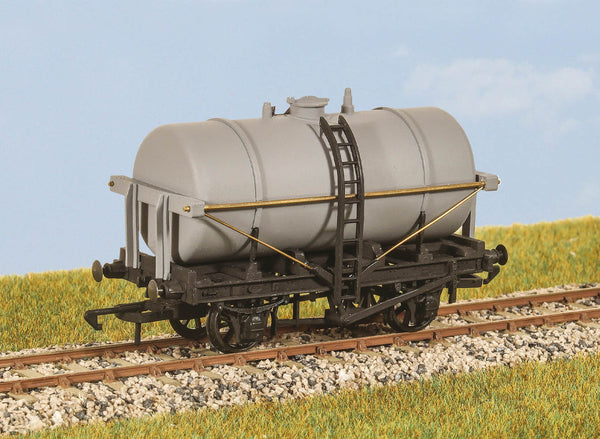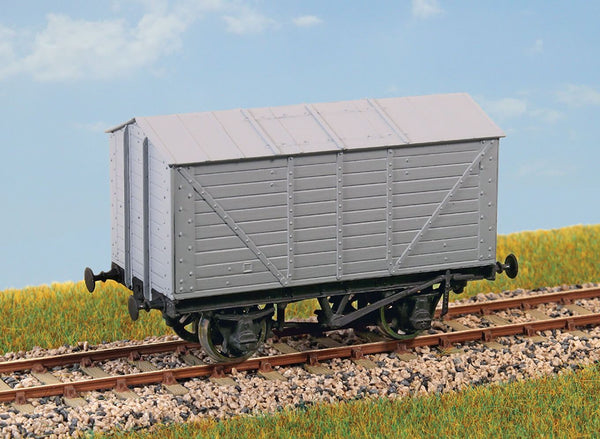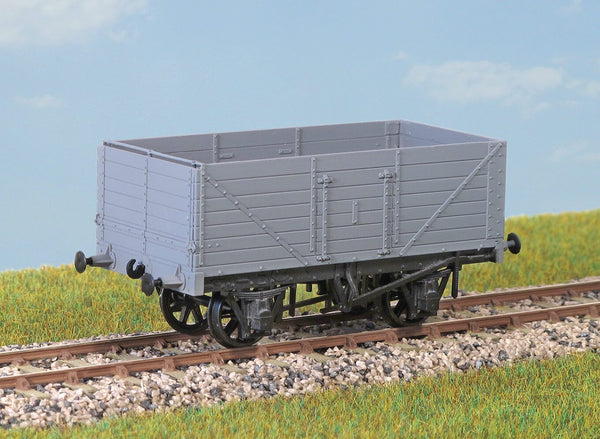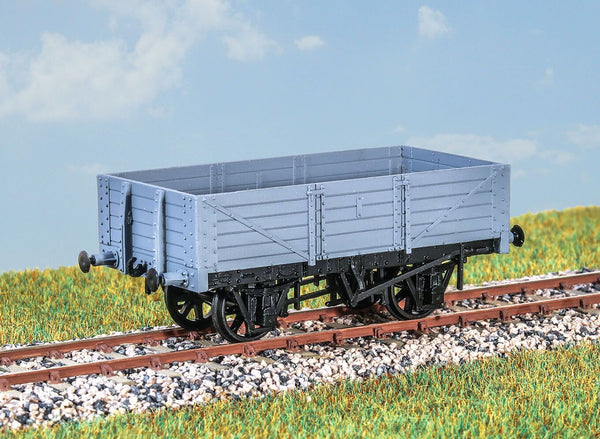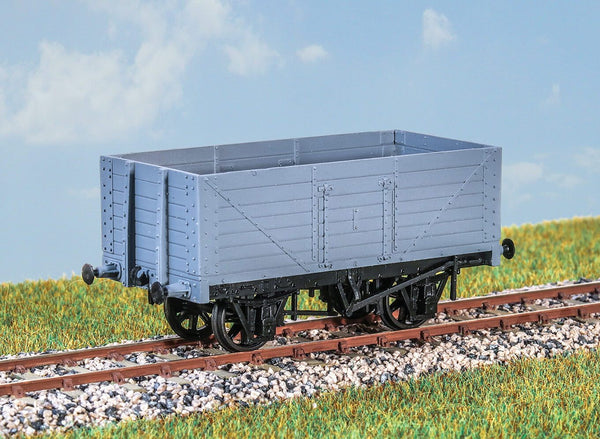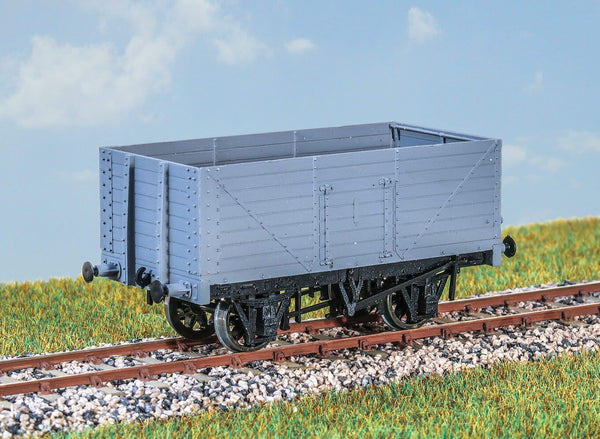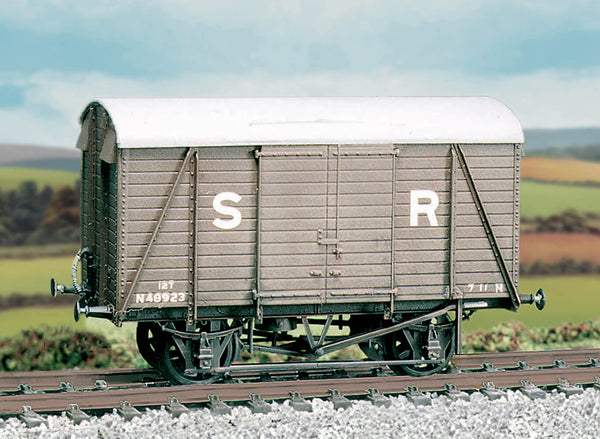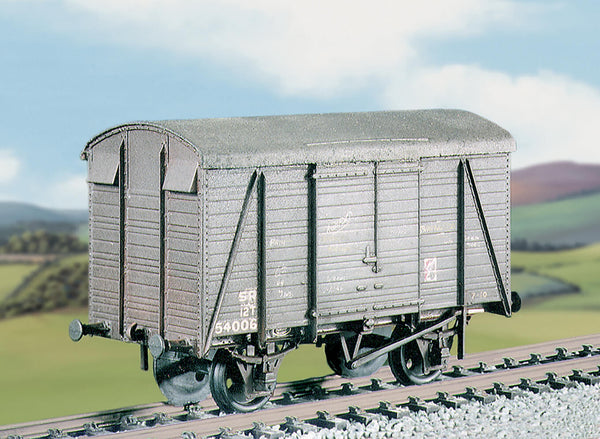BROWSE PECO PRODUCTS
Browse through our complete product portfolio.
158 Products Found
LNER 21ton Trestle Wagon
Converted both before and after nationalisation (diagram 1/217) from standard plate and double bolster wagons to carry steel plates too wide to be loaded flat. Period mid 1940s to early 1970s. These finely moulded plastic wagon kits come complete with pin point axle wheels and bearings. Glue and paint will be required, along with appropriate transfers. Additional parts to enable the vehicle to be modelled incorporating modifications made to the prototypes during their working life are included where appropriate.
LNER 21ton Twin Bolster Wagon
21 ton Twin Bolster Wagon 1943 (diagram 1/168) These wagons were used to carry short steel sections such as girders, pipes and reinforcing rods. Period 1943 to early 1970s. These finely moulded plastic wagon kits come complete with pin point axle wheels and bearings. Glue and paint will be required, along with appropriate transfers. Additional parts to enable the vehicle to be modelled incorporating modifications made to the prototypes during their working life are included where appropriate.
LNER Bogie Bolster Wagon
(Quad) In 1921 the NER bought a number of these wagons from the Government. They lasted until the mid 1950s. Several worked as flat wagons. These finely moulded plastic wagon kits come complete with pin point axle wheels and bearings. Glue and paint will be required, along with appropriate transfers. Additional parts to enable the vehicle to be modelled incorporating modifications made to the prototypes during their working life are included where appropriate.
LNER Bogie Brick Wagon
Built in 1930 (repeating a 1921 GNR design), these wagons (diagram 70) carried brick between Peterborough and London. Examples were in use until 1966. These finely moulded plastic wagon kits come complete with pin point axle wheels and bearings. Glue and paint will be required, along with appropriate transfers. Additional parts to enable the vehicle to be modelled incorporating modifications made to the prototypes during their working life are included where appropriate.
LNER Bogie Sulphate Wagon
Eighty of these wagons (diagram 69) were built in the 1930s to carry fertilizer from the I.C.I. Works at Billingham, Tee-side. Many ended their days carrying refuse in the Kings Cross area in the 1960s.These finely moulded plastic wagon kits come complete with pin point axle wheels and bearings. Glue and paint will be required, along with appropriate transfers. Additional parts to enable the vehicle to be modelled incorporating modifications made to the prototypes during their working life are included where appropriate.
LNER Conflat Container Wagon
With DX Open Container (diagram 104) The standard LNER container wagon from the mid 1930s. In service until 1970. Open containers were widely used until the early 1960s. These finely moulded plastic wagon kits come complete with pin point axle wheels and bearings. Glue and paint will be required, along with appropriate transfers. Additional parts to enable the vehicle to be modelled incorporating modifications made to the prototypes during their working life are included where appropriate.
LNER DX Open Container kit
As supplied with the Conflat 'S' Container wagon kit PC35; open containers were widely used until the early 1960's.
LNER Extra Long CCT Van
Built in two batches in 1939 and 1950, these vehicles (diagram 6) were used to carry parcels, mail and motor vehicles in passenger and parcels trains until 1980. These finely moulded plastic wagon kits come complete with pin point axle wheels and bearings. Glue and paint will be required, along with appropriate transfers. Additional parts to enable the vehicle to be modelled incorporating modifications made to the prototypes during their working life are included where appropriate.
LNER Horse Box Wagon
30 of these horse boxes (diagram 5) were built by the LNER in 1938, mainly to carry racehorses to meetings throughout Britain. Many lasted into the early 1960s. These finely moulded plastic wagon kits come complete with pin point axle wheels and bearings. Glue and paint will be required, along with appropriate transfers. Additional parts to enable the vehicle to be modelled incorporating modifications made to the prototypes during their working life are included where appropriate.
LNER Standard Cattle Truck
For over 100 years the cattle truck was an integral part of the British railway scene. Our model is of the standard LNER cattle truck (diagram 39) introduced in the 1920s and surviving into BR ownership.These finely moulded plastic wagon kits come complete with pin point axle wheels and bearings. Glue and paint will be required, along with appropriate transfers. Additional parts to enable the vehicle to be modelled incorporating modifications made to the prototypes during their working life are included where appropriate.
LNER Wagon Tarpaulin
LNER/BR 10ton Fish Van
The LNER built almost 2000 of these (diagram 134) in 1938/39 for express fish traffic. This kit represents those rebuilt by BR with insulated bodies and recessed doors. Many lasted into the late 1960s.
These finely moulded plastic wagon kits come complete with pin point axle wheels and bearings. Glue and paint will be required, along with appropriate transfers. Additional parts to enable the vehicle to be modelled incorporating modifications made to the prototypes during their working life are included where appropriate.
Parkside OO - 4-Wheel Milk Tank Wagon Kit
These kits have been transferred over to Parkside from the PECO "Wonderful Wagons" range, a long-standing favourite kit of modellers for many years. Back then these kits were pre-coloured and decorated, but we have overhauled the kits, added an NEM pocket (so modellers can easily fit a coupler of their choice - although the kit is supplied with a set of tension-lock couplers) and now supply the kits with either a set of milk company decals (PC91) or oil company decals (PC92). The decals provide a whole lot more detail than previously applied to the original pre-decorated kits.
Parkside OO - 4-Wheel Oil Tank Wagon Kit
These kits have been transferred over to Parkside from the PECO "Wonderful Wagons" range, a long-standing favourite kit of modellers for many years. Back then these kits were pre-coloured and decorated, but we have overhauled the kits, added an NEM pocket (so modellers can easily fit a coupler of their choice - although the kit is supplied with a set of tension-lock couplers) and now supply the kits with either a set of milk company decals (PC91) or oil company decals (PC92). The decals provide a whole lot more detail than previously applied to the original pre-decorated kits.
Permanent Way Wagons Kit
Set of 4 wagons, 2 flat wagons for carrying rail sections, and 2 low sided open wagons for ballast and track maintenance equipment. The kit includes metal wheels,transfers, brass buffer heads and the rail load as shown, and requires glue and paint to complete.
Private Owner Grain Wagon
Built in the 1920s, these vehicles carried grain to distilleries, breweries and flour mills. Examples of these interesting wagons lasted in service until as late as 1970. These finely moulded plastic wagon kits come complete with pin point axle wheels and bearings. Glue and paint will be required, along with appropriate transfers . Additional parts to enable the vehicle to be modelled incorporating modifications made to the prototypes during their working life are included where appropriate.
RCH 1923 Design 12ton Coal Wagon
7-plank 12 ton Coal Wagon RCH Design 1923 Many thousands of these wagons were built to a standard Railway Carriage House design between the wars. This type was also used by both the LNER and LMS. Widely used until the early 1960s. These finely moulded plastic wagon kits come complete with pin point axle wheels and bearings. Glue and paint will be required, along with appropriate transfers. Additional parts to enable the vehicle to be modelled incorporating modifications made to the prototypes during their working life are included where appropriate.
RCH 1923 Design 5 Plank Mineral Wagon
5-plank 12 ton Mineral Wagon (Fixed Ends) RCH 1923 Built in the 1920s to carry roadstone, built to a Charles Robert design with steel sheet floor. Some lasted into the 1960s. These finely moulded plastic wagon kits come complete with pin point axle wheels and bearings. Glue and paint will be required, along with appropriate transfers. Additional parts to enable the vehicle to be modelled incorporating modifications made to the prototypes during their working life are included where appropriate.
RCH 1923 Design 7 Plank Coal Wagon
7-plank 12 ton Coal Wagon (Fixed Ends) RCH 1923 Thousands of these wagons were built to a standard Railway Clearing House design between the wars, mainly for coal merchants. Latterly in BR stock, they lasted into the early 1960s. These finely moulded plastic wagon kits come complete with pin point axle wheels and bearings. Glue and paint will be required, along with appropriate transfers. Additional parts to enable the vehicle to be modelled incorporating modifications made to the prototypes during their working life are included where appropriate.
RCH 1923 Design 8 Plank Coal Wagon
8-plank 12 ton Coal Wagon RCH Design 1923 Many thousands of these wagons were built to a standard Railway Clearing House design between the wars, for collieries and coal merchants. Latterly in BR stock, they lasted into the early 1960s. These finely moulded plastic wagon kits come complete with pin point axle wheels and bearings. Glue and paint will be required, along with appropriate transfers. Additional parts to enable the vehicle to be modelled incorporating modifications made to the prototypes during their working life are included where appropriate.
SR 12ton Even Planked Ventilated Box Van Kit
1,000 of this design were built by the Southern Railway from 1936 to 1939. Extra vents and transfers are included for the Dover ferry van version. Glue and paints are required to complete this model.
SR 12ton Uneven Planked Ventilated Box Van Kit
Built 1941 to 1944 by the Southern Railway, they also made 500 to the same design for the LMS and 650 for the GWR. Transfers are included; glue and paints are required to complete this model.










